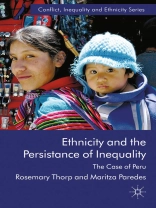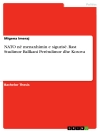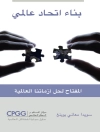Understanding why inequality is so great and has persevered for centuries in a number of Latin American countries requires tools that go beyond economics. Investigating the case of Peru, this book explores how inequality is embedded in institutions that constitute the interface between the economy, the polity and geography of the country.
Cuprins
Introduction Appendix: Background on Peru The Complexity and Salience of Ethnic Identity in Peru Appendix: The Methodology of the CRISE Perception Survey: The Questionnaire and the Sample; D.Sulmont Measuring Group Inequalities; A.Figueroa, M.Paredes & R.Thorp Persistent Inequalities in Education; A.Figueroa, M.Paredes & R.Thorp The Historical Embedding of Group Inequalities: From the Colony to the War with Chile; C.Contreras, M.Paredes & R.Thorp The Embedding of Regional Inequality and the Consequences for Group Inequalities: the 1890s to the 1960s; C.Contreras, M.Paredes & R.Thorp The Evolving Crisis and Consequences for Group Inequality, 1968-90 The Fujimori Years: the Peak of Political and Economic Exclusion Conclusion
Despre autor
CARLOS CONTRERAS is Professor of Economics of the Catholic University of Lima, Peru ADOLFO FIGUEROA is Professor Emeritus of Economics and Senior Researcher at Centrum Business School, Catholic University of Peru DAVID SULMONT is Associate Professor at the Social Science Department of the Catholic University of Peru, and Director of Studies of the Master’s Degree in Sociology












